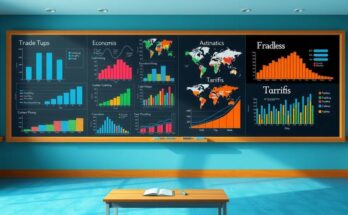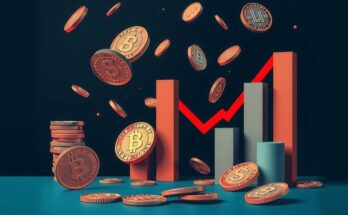In the early days of President Trump’s second term, significant policy transformations are stirring concerns about a potential U.S. recession. While the idea of an economic downturn seems improbable now, uncertainty clouds the future landscape. This analysis hones in on the immediate economic impacts of recent policies, especially in relation to recession risks, acknowledging that opinions on these changes may vary independently of economic forecasts.
When discussing immigration policy, changes may be seen in two forms: reduced immigration and increased deportations. These shifts could lower GDP growth slightly but don’t directly equate to a recession. Interestingly, deportation-induced changes could reduce employment while paradoxically lowering unemployment rates. The economic ramifications are complex, affecting income distribution among residents, but substantial deportations remain unlikely due to resource constraints.
Tariffs introduce a new layer of complexity, potentially increasing costs for U.S. manufacturers reliant on foreign products. This escalation may lead to higher consumer prices, impacting businesses specializing in non-essential goods. However, the impact of tariffs is expected to be minor compared to the vastness of the economy, with immediate repercussions considered minimal over the next couple of years.
Regarding federal employment, significant layoffs appear improbable. Legal precedents suggest that funds appropriated by Congress must be expended, implying a limitation on potential cuts. Furthermore, Congress has historically leaned towards promoting spending rather than fiscal conservatism. Thus, while layoffs could hypothetically enable cost-cutting, historically, lawmakers have not favoured such moves vigorously.
Nevertheless, if a considerable number of federal employees are laid off, it could introduce turmoil into the job market. A historical lens reveals potential parallels with post-World War II employment transitions, where consumer spending prevailed amidst high unemployment forecasts. Presently, the economy contends with roughly eight million job openings, indicating resilience despite federal workforce reductions.
General uncertainties loom, especially concerning capital expenditure among businesses. While initial data highlights robust investment trends, ongoing policy shifts may introduce hesitation in decision-making. Although this hesitance isn’t forecasted as a defining economic issue presently, awake to potential risks will play a crucial role in navigating tumultuous waters.
In conclusion, synthesizing the current economic predictions and recent policy shifts suggests that a recession within the next two years remains unlikely. However, vigilance remains paramount as the landscape continues to evolve quickly, demanding close attention to specific industry dynamics affected by tariffs, labor shifts, and legislative regulations.
President Trump’s new policies prompt fears of a recession, though current forecasts suggest otherwise. Changes in immigration could affect GDP growth, tariffs may increase costs for manufacturers, and significant federal layoffs seem unlikely. A recession is not anticipated in the next two years despite potential risks associated with politicians’ decisions and business uncertainties.
To summarise, President Trump’s initial policy shifts elicit concerns over potential recessionary impacts. While immigration changes, tariffs, and federal employee layoffs pose risks, current analysis indicates a recession remains improbable in the near future. However, ongoing uncertainties and sector-specific challenges warrant careful monitoring as economic conditions develop.
Original Source: www.forbes.com



